6 Types of Mosquitoes in Virginia (With Pictures)
-

- Last updated:
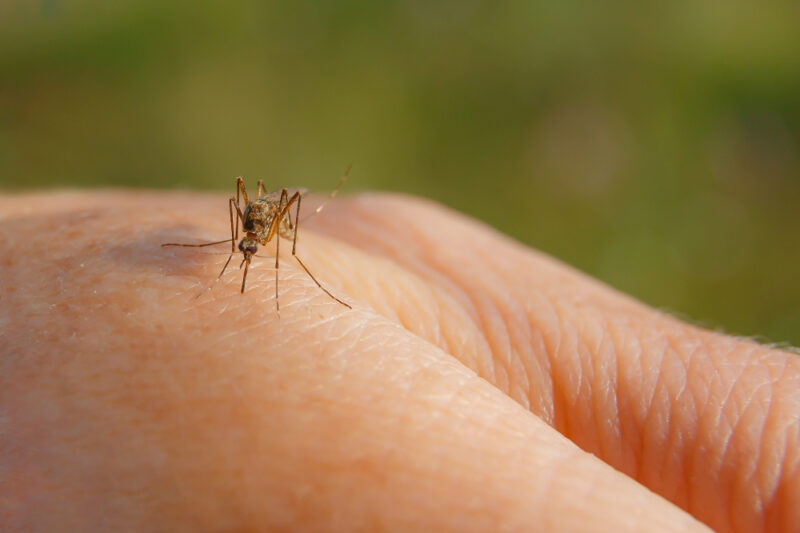
Every human being knows the kind of nuisance mosquito bites can be. While everyone struggles to avoid these annoying and dangerous pests during night-time, people in Virginia fight an everyday battle. Several species found their way to Virginia and became comfortable staying there for the long run, and some will attack humans throughout the day. While these pests are annoying, they are also famous for transmitting several serious diseases.
If you want to learn more about the specific mosquito species attacking you day and night, read the article below. At the end of the article, you will find some helpful advice on staying as safe as possible from mosquito infestations.
The 6 Types of Mosquitoes in Virginia
1. Asian Tiger Mosquito
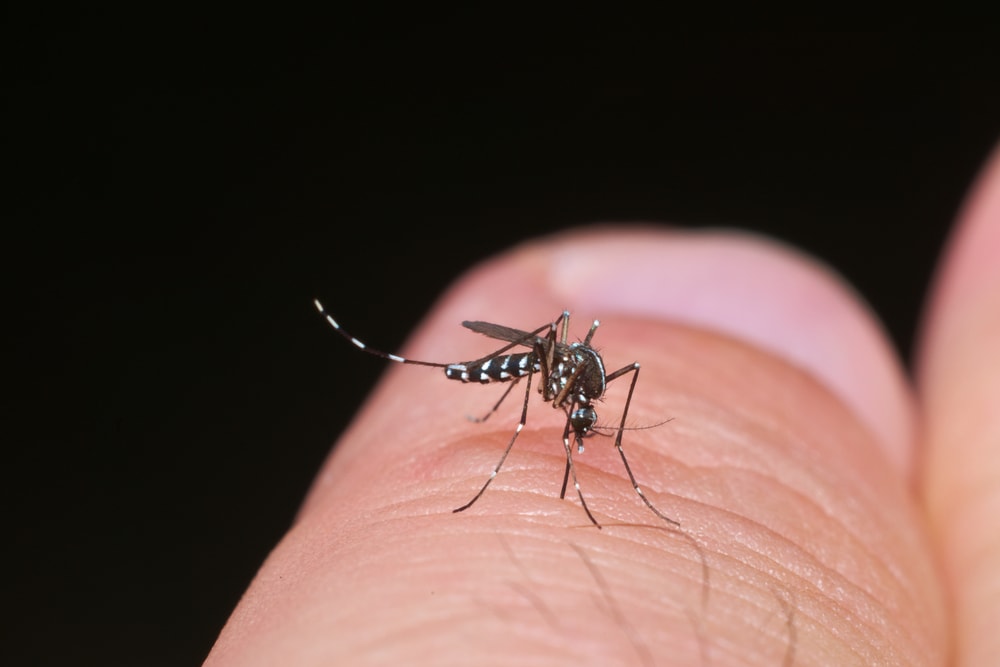
| Scientific name: | Aedes albopictus |
| Identification: |
White and black striped skin, with a single, distinctive white line on the head and upper body.
|
| Habitat: |
Tropical and subtropical regions, moist and warm environments. Adapted over time to cool regions by hibernation.
|
The Asian tiger mosquito is one of the most aggressive mosquitos in Virginia, booming in population over the years and beating out other mosquito species. Unlike most other species, the Asian tiger attacks at any time of the day, making it a real nuisance for the people of Virginia.
Asian tiger mosquitoes enjoy the climate of Virginia because of the warm temperatures that rarely stay freezing for more than a few days. Virginia also has plenty of natural water sources, perfect for the Asian tiger mosquito to breed.
- Eastern equine encephalitis
- Zika virus
- West Nile virus
- Chikungunya
- Dengue fever
2. House Mosquito

| Scientific name: | Culex pipiens |
| Identification: |
Medium-sized, with a brown surface and white scales on the abdomen
|
| Habitat: |
Aquatic, near water, collects stagnant water, ponds, swimming pools, water sources, containers, and gutters.
|
The house mosquito is one of the most common species at dusk or dawn. They are nocturnal pests, making them familiar visitors to your home late at night. House mosquitos can be found anywhere, as they are aquatic, breeding and developing near water sources. They can breed in water containers, ponds, neglected swimming pools, and in clean or polluted water. The lifespan of this mosquito species is short—no longer than 15 days.
- Eastern equine encephalitis
- St. Louis encephalitis
- West Nile virus
- Western equine encephalitis
3. Yellow Fever Mosquito
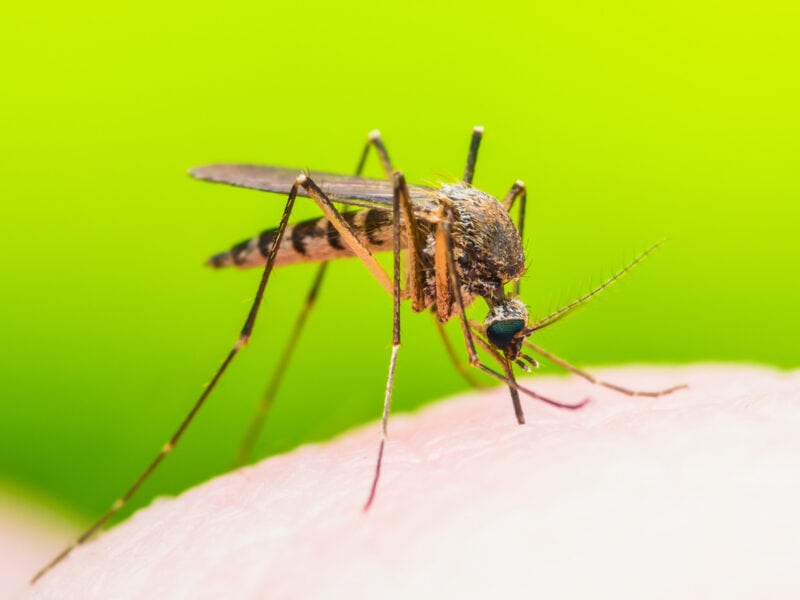
| Scientific name: | Aedes aegypti |
| Identification: |
White and black stripes on the legs, a lyre-shaped pattern on the upper body
|
| Habitat: |
Tropical and subtropical regions, urbanized areas, water containers, swimming pools, drainage ditches
|
Before the Asian tiger mosquitoes arrived in Virginia, the yellow fever mosquitoes were much more widespread. Nowadays, they are pretty rare, although they still appear in Virginia. These mosquitoes are best known for their disease-transmitting capabilities, which rarely occur in the United States. They transmit the yellow fever disease, mainly in the urbanized areas of Africa and South America. These mosquitos are aquatic, breeding in containers with water sources. They breed in flower pots, neglected swimming pools, spare tires, ponds, and ditches.
- Yellow fever disease
- West Nile virus
- Chikungunya
- Dengue fever
- Zika virus
4. Southern House Mosquito
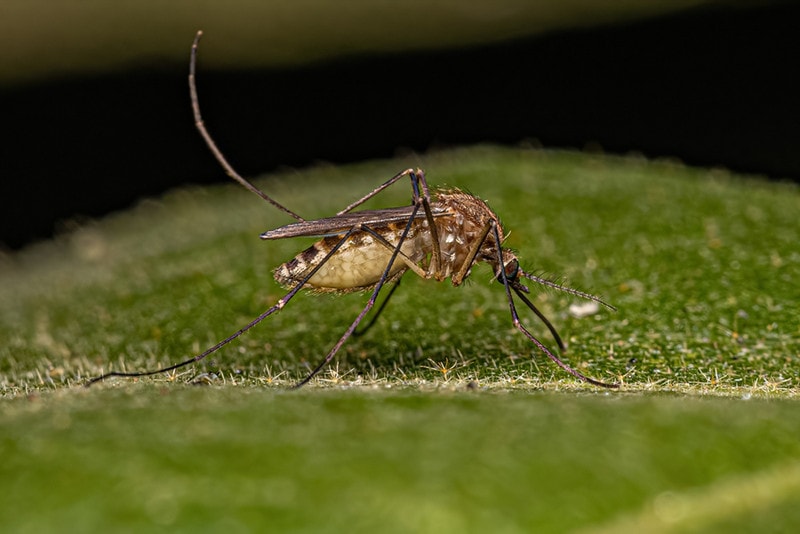
| Scientific name: | Culex quinquefasciatus |
| Identification: |
Light brown body and head, dark brown wings, upper body, and legs
|
| Habitat: | Sub-tropical climates |
The southern house mosquito is a medium-sized light brown mosquito that originates from tropical climates and temperate regions and can be found throughout the south of the United States, including Virginia. These mosquitoes are mostly present and feed during night-time when the female mosquitoes feed on the blood of birds, animals, and humans, which they desperately need to lay eggs. They lay their eggs in any aquatic environment, breeding in any standing water they can find, including bird baths, old tires, and water containers.
- St. Louis encephalitis
- Western equine encephalitis
- West Nile fever
5. Banded Spring Mosquito
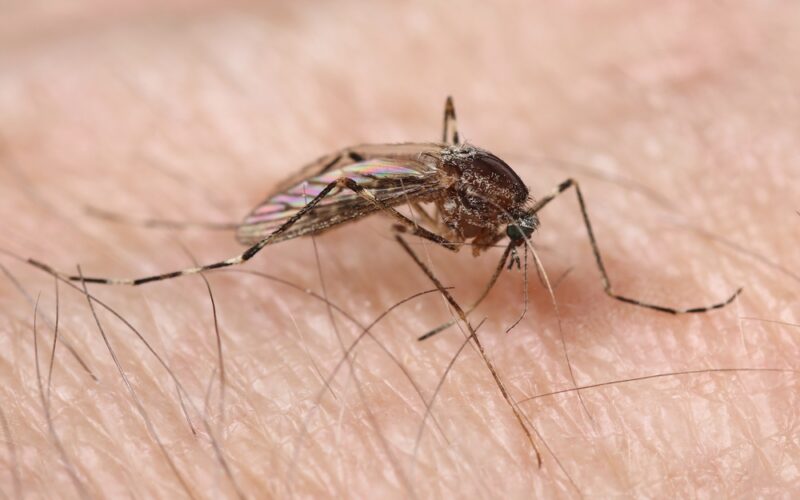
| Scientific name: | Culiseta annulata |
| Identification: |
One of the largest species, with spotted wings and legs and striped abdomen
|
| Habitat: | Caves, hollow trees, buildings |
The banded spring mosquito is one of the largest mosquito species with characteristic and easily recognizable white markings across its entire body. These mosquitoes lay their eggs in aquatic environments, preferring water with high nitrogen content. The adults rest in hollow trees, caves, and buildings, and they feed on animals, humans, and birds at the beginning and end of the year. This mosquito species isn’t responsible for carrying any human pathogens, although it may cause a potentially serious infection of the skin called cellulitis.
- Cellulitis
6. Asian Rockpool Mosquito

| Scientific name: | Aedes japonicus |
| Identification: | Dark head and light brown body, with golden stripes across |
| Habitat: |
Containers with water and decaying organic matter, tolerant to cooler climates
|
Asian rockpool mosquitoes have become one of the dominant mosquito species in the United States. This mosquito species can adapt to colder climates in temperate regions and has gained a tolerance for organic concentrations in containers where they breed. The Asian rockpool mosquito is easily differentiated from other species, mainly because of the unique pattern on its upper body or scutum pattern. The pattern consists of several golden stripes, sometimes forming a lyre shape.
- West Nile virus
- Japanese encephalitis virus
- La Crosse virus
- St. Louis encephalitis virus
- Eastern equine encephalitis
- Chikungunya virus
- Dengue virus
- Rift Valley fever
Tips on How To Deal With Mosquitoes in Virginia
While the state of Virginia is occasionally swarmed with mosquitoes, creating a nuisance for residents throughout the year, dealing with these pests is possible. There are several methods you can try to help you deal with this pest safely without disrupting their natural habitat. Your home and backyard will be much safer, and you won’t have to deal with mosquitoes daily.
You first must eliminate any body of water, large or small, surrounding your house. That means cleaning your neglected pool, removing puddles, and any containers with water lying around.
If you cannot remove a particular body of water, such as a nearby pond, you can try treating it with an environmentally safe larvicide. These mosquito-specific chemical products are safe and will ensure no larvae develop near your home.
- Cleaning up your neighborhood
- Dressing up accordingly—long sleeves and pants
- Using door or window screens
- Clean out the trash or any debris piled up around your home
- Mow your lawn regularly, as mosquitoes enjoy resting in tall grass
Conclusion
Hopefully, this article was valuable and helped you learn some interesting details about mosquitoes. Since mosquitoes are some of the deadliest pests in the world, it is wise to know how to identify the species. Understanding how to reduce mosquitoes in your home is crucial since it can significantly improve your everyday life in Virginia.
Featured Image Credit: Sauko Andrei, Shutterstock
Contents



